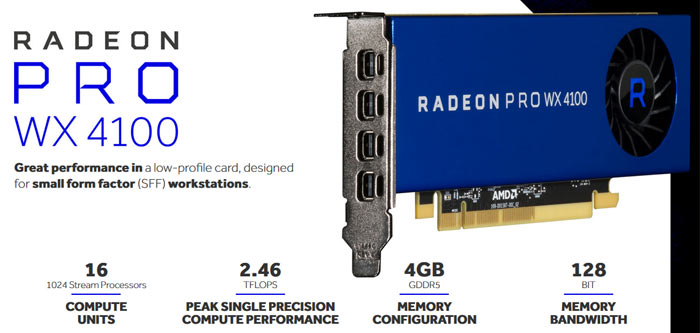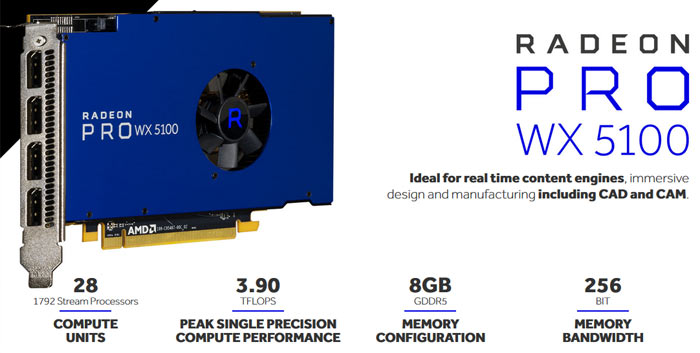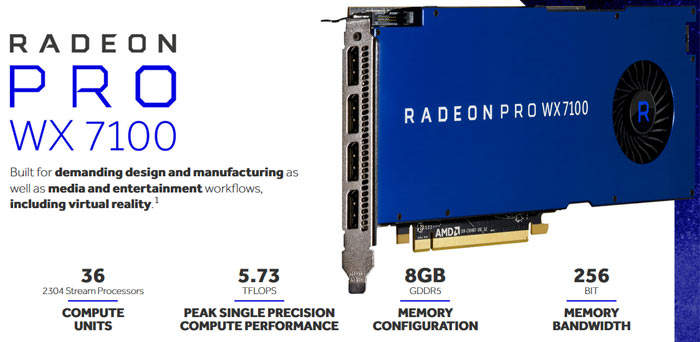AMD has launched its Radeon Pro WX workstation graphics cards. The new trio of cards forming the WX range are all based upon 14nm Polaris GPUs and consist of; the Radeon Pro WX 4100 low profile graphics card, the Radeon Pro WX 5100 which offers 3.9TFLOPS while using just 75W, and the Radeon Pro WX 7100 which is claimed to be "the world's fastest single-slot workstation (VR Ready) GPU".
AMD Radeon Pro WX 4100
This card is based upon the Polaris 11 chip with all of its 1024 stream processors enabled. Claimed to be the "fastest low-profile workstation graphics GPU," it is capable of breaking the 2TFOPS barrier for cards in this category.

The WX 4100 ships with 4GB of GDDR5 memory connected via a 128-bit memory bus. It is capable of driving 4x 4K monitors, or a single 5K monitor at 60Hz. Other low-profile CAD workstation cards can't touch this ability, says AMD. The WX 4100 becomes available on 10th November, at US$399 MSRP.
AMD Radeon Pro WX 5100
AMD proudly boasts that the WX 5100 will become the fastest 75W workstation GPU available. It can deliver 5.7 TFLOPS of single precision floating point performance in a single slot (full height) and was designed with an eye on those working in professional 3D apps. For example it is "41 per cent faster performance in Siemens PLM Software NX than competing cards in its class," enabling high-fidelity high-res real-time visualisation in industries such as automotive and architecture.

The WX 5100 is equipped with 8GB GDDR5 memory connected via a 256-bit memory bus. Its Polaris 10 GPU has 1792 Stream Processors (28CUs) enabled (just like the recently seen AMD Radeon RX 470D). As a full height card it upgrades the 4x miniDP ports on the WX 4100 to 4x full sized DP ports. The WX 5100 becomes available on 18th November, at US$499 MSRP.
AMD Radeon Pro WX 7100
AMD's WX 7100 tops the Radeon Pro workstation range to deliver 5.7TFLOPS in a single slot. It is designed to be employed by professional VR content creators.

The WX 7100 is equipped with 8GB GDDR5 memory on a 256-bit bus, and 2304 Stream Processors (36 CUs). Its performance is up to 45 per cent faster competing cards in its class in Solidworks, says AMD. This 4x DP port equipped card has a 130W TDP. The WX 7100 becomes available on 10th November, at US$799 MSRP.
AMD hasn't published the clock speeds and memory speeds of the above new cards. To make the most of these Pro graphics cards AMD has specially written Radeon Pro Software Enterprise Drivers which are updated monthly and offer "exceptional stability".













